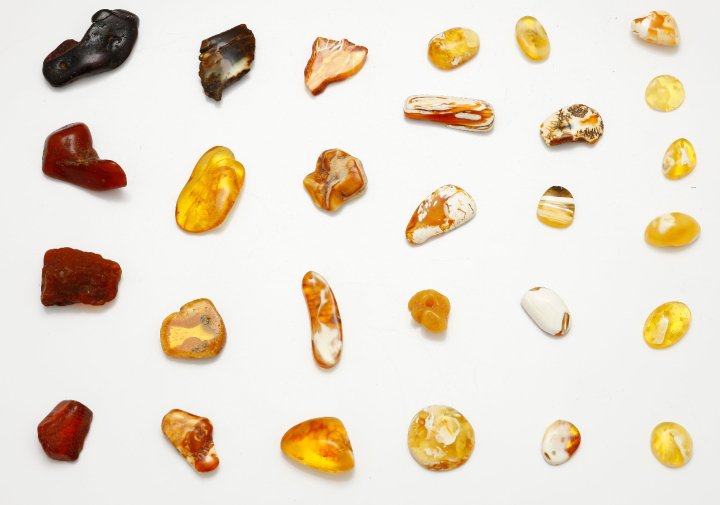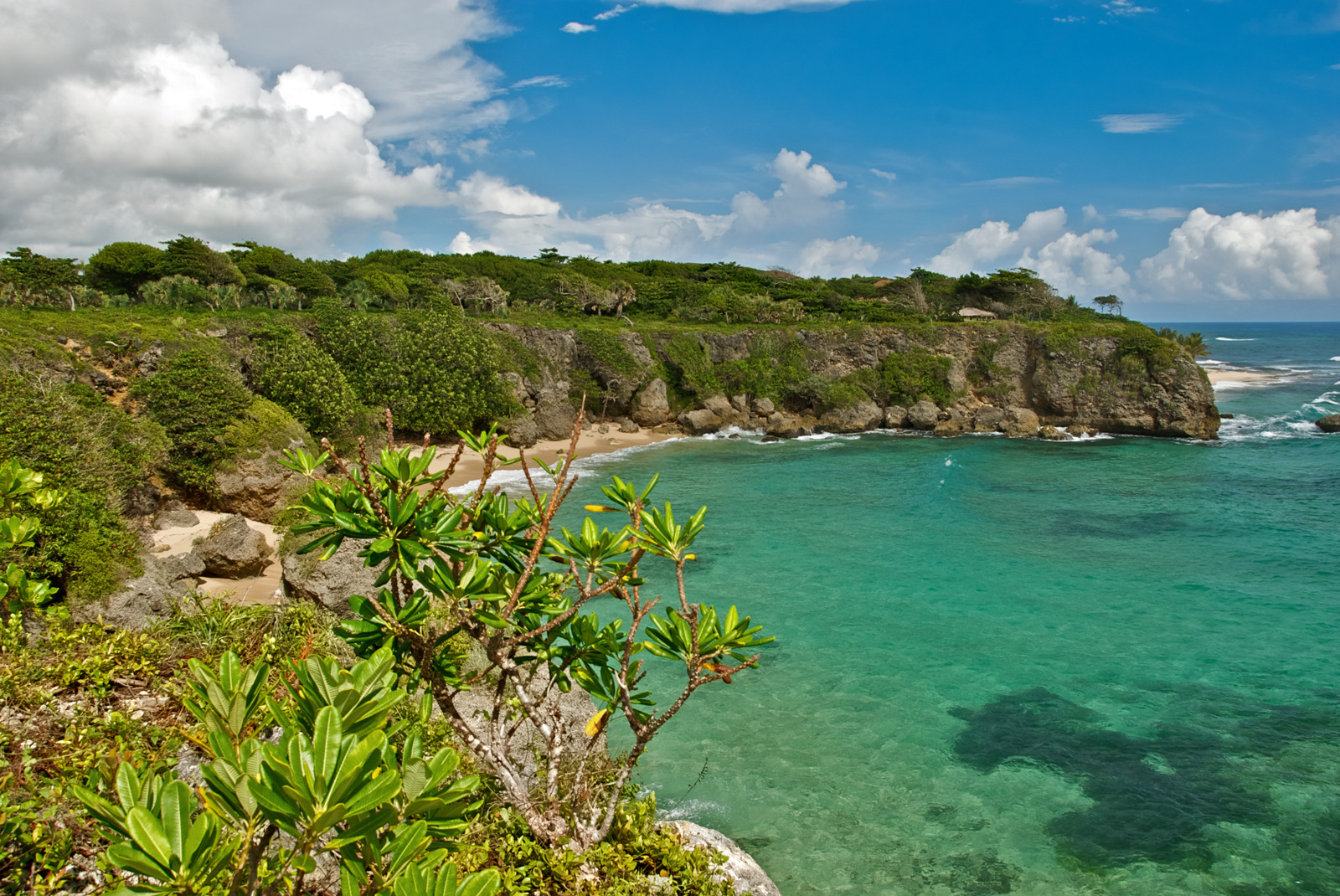Amber Coast
The Amber Coast is because of its large reserves of amber so designated coastal strip north-west of Kaliningrad in the Russian Kaliningrad Oblast. This amber is extracted in open. Even Tacitus mentions in his Germania living along this coast people of Aesti, acting with amber, and documents the designation glesum ( Latinized Glaesum ).
Amber concentration
The high concentration of the Amber Coast Samland goes on here relatively oberflächenah lying so-called " Blue Earth " back. It is a marine sediment, which was created in a broad bay of the former Eocene sea. Here, the delta of a coming out of the " amber forest " river was ( Eridanus ), who led the fossil resin with it. In contemporary reports, it is said that in some years after heavy autumn storms so much Amber was thrown to the beach that it was transported by horse and cart. In 1862, should have been lying on the beach section between Nodems and Palm nod to the 4,000 pounds of amber, in 1911 north of Palm nod around 600 kg. Middle of the 19th century turned to the Oberbergrat Runge calculated that the average annual yield is said to have been due to the actual Amber Coast at 400 cwt.
After successes in the Bernsteinbaggerei in the Curonian Lagoon, the company Stantien & Becker began in the last quarter of the 19th century in this part of the coast with it, from using the latest technology Bernstein on an industrial scale from the deposits of the Blue Earth under the Samland mainland of the cliff to promote in civil engineering. Previous degradation experiments of other operators had always been in the absence of appropriate technical facilities of short duration. Since 1913, Bernstein is in sight of the amber coast near the village of Jantarny, the former palm nod, extracted in open.
Differences to the inland
Also inland locally amber is found in considerable quantities. For example, succinic concentrations between Berlin and Stettin were discovered during the Barnim Nature Park and in Eberswalde near dam and canal construction. The day -to-find in these areas Amber was ( beginning about 115,000 years ago, ending years ago 12,000 ) transported in the Vistula Glacial by advancing from the northeast glacial ice after this more or less large floes of the "Blue Earth" during his advance from the dissolved out of the ground today Samland. After the melting of the glaciers, the ice floes or their mixed with other sediment and meltwater sands remains were left. The enormous meltwater streams have transported a considerable portion of the recorded material from the ice on the rise after the retreat of the glaciers. Some of it is left lying in these glacial valleys, but many things in the to time, gradually forming the Baltic and - from further west glacial valleys - enters the North Sea. Herein lies the reason that if the weather Bernstein of Samland is rinsed today at the beaches of the North Sea and the Baltic Sea coastal areas far from the "Blue Earth".
It is not excluded that already knew the people of the Bronze Age amber also from these inland glacial deposits and used, possibly even locally Bernstein was systematically promoted by Duckelbergbau. However, it may well have been only comparatively small amounts due to the above -mentioned deposition conditions. In essence, the extraction of amber have mainly restricted to the Gleaning superficially days Kicked pieces.
Trade Routes in the Amber Coast
Archaeologists suspect near the border with Poland today is a commercial hub for the amber, which should be in a direct relationship to one of the ancient trade routes.
The trade routes of the coveted as jewelry, incense and amber medicine to the Mediterranean is called long- Amber Road. Your main branches leading from the deposits mentioned above by Austria to the Adriatic Sea, a western branch of Hamburg to Marseille. At traffic node ( for example, near the Vistula and Danube ) emerged early market places. In Lower Austria, the Romans fortified around the time of these ancient transport lines partially weatherproof Roman roads.
Amber coast of Hispaniola
As Amber Coast (Costa de Ambar or simply " Costambar " ) also the westernmost of Puerto Plata coast of the Dominican Republic is known, at the beach finds are possible and is funded from numerous mines Dominican amber in the vicinity










